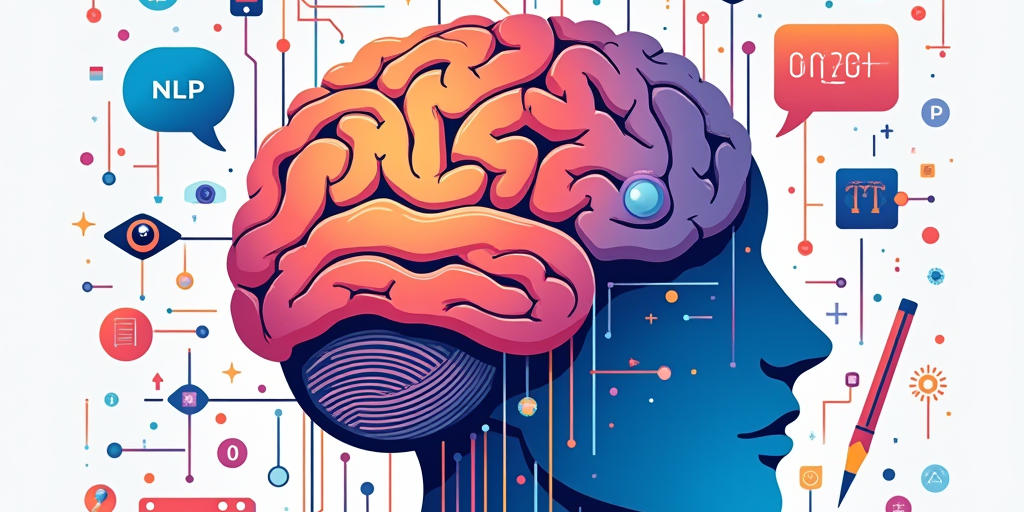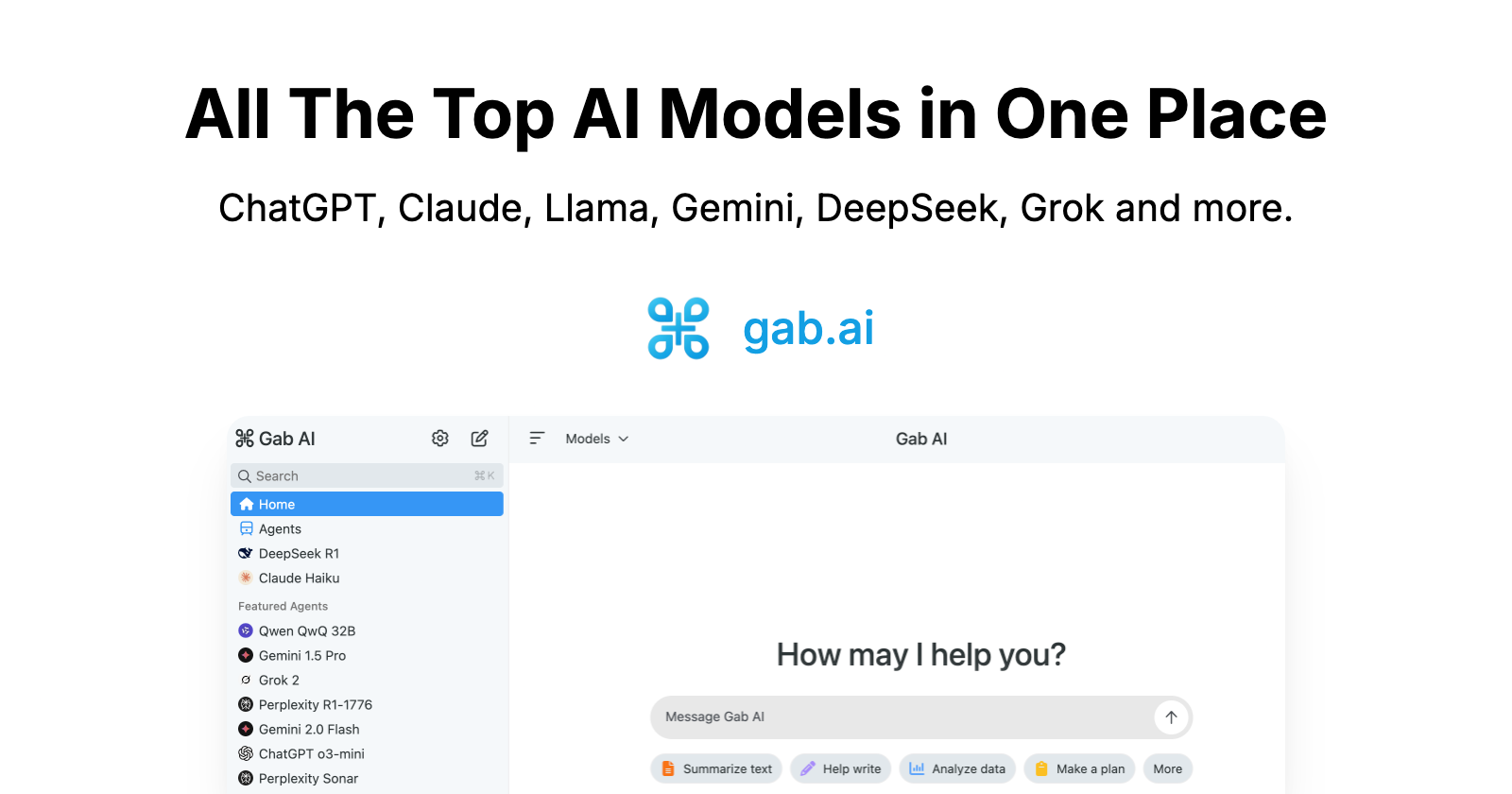Essential AI Terminology Explained for Beginners

Artificial Intelligence is everywhere you look these days: powering virtual assistants, enhancing smartphone cameras, making shopping recommendations, and even creating digital art. But with this growing presence comes a flood of technical jargon. If you’ve felt confused by AI-related terms in conversations, news articles, or tech discussions, you’re not alone! This post will walk you through all the basic terminology in AI so you can join in with confidence.
Use all of the top AI models in one dashboard with Gab AI.
Artificial Intelligence (AI)
At its core, Artificial Intelligence (AI) is about building machines and software systems that can perform tasks typically requiring human intelligence. These tasks can include understanding speech, recognizing images, playing games, reasoning, and making decisions. The ultimate goal of AI is to mimic or even surpass human cognitive functions, though most AI today is considered “narrow AI,” focused on a specific task.
Machine Learning (ML)
A foundational concept within AI is Machine Learning (ML). Rather than explicitly programming a computer what to do, ML involves giving it lots of data and letting it learn patterns, relationships, or rules from this data. Most of the impressive progress in AI over the past decade is due to advances in machine learning.
- Algorithm: In the context of ML, an algorithm is a specific set of steps the computer follows to find these patterns in data. Different algorithms are chosen depending on the problem, such as predicting numbers or sorting items into categories.
- Model: The “model” is the final outcome of machine learning. After the algorithm is trained on data, the model maps inputs (like an email) to expected outputs (such as “spam” or “not spam”).
Deep Learning
Deep Learning is a powerful subsection of machine learning. It uses structures called artificial neural networks, which are inspired by how human brains are organized—with layers of interconnected “neurons.”
- Neural Network: A network made of simple units (nodes or neurons) organized in layers. Data moves through the network, with each layer extracting features and patterns.
- Layer: Each stage in a neural network that transforms data in a specific way.
- Node (Neuron): An individual processing element within a layer.
Deep learning excels at complex tasks like image recognition, speech transcription, and natural language generation.
Data in AI: Training and Testing
- Training Data: To learn, AI systems rely on big collections of examples, known as training data. For a model to learn to spot cats in photos, the training dataset would consist of thousands (or millions) of labeled pictures.
- Test Data: Not all data is used for training. Testing data is kept separate so we can evaluate how well the model performs on new, unseen examples.
Types of Learning
One of the most fundamental distinctions in AI is the type of learning used:
- Supervised Learning: The model is trained using labeled data—where we already know the answer for each example (like credit card transaction: “fraud” or “not fraud”).
- Unsupervised Learning: The model is given data without explicit labels. It must find structure, such as groups of similar customers.
- Reinforcement Learning: The model makes sequential decisions, receiving rewards or penalties (like points in a game) to learn what strategies work best.
Inputs, Outputs, and Predictions
- Input: The data you supply to an AI model so it can make a prediction; for example, a sentence for translation or a photo for categorization.
- Output: The answer or prediction the model returns, such as a translated sentence or the label “cat.”
Parameters and Hyperparameters
- Parameters: As models learn, they adjust internal values called parameters. In neural networks, these are known as weights.
- Hyperparameters: These are the settings you pick before training starts, such as the learning rate (how quickly the model adjusts) or number of layers.
Inference
Once a model is trained, using it to make predictions on new data is called inference. For example, when you upload a picture to a photo app and it names the people or objects, that’s inference in action.
Overfitting and Underfitting
Machine learning isn’t perfect, and two important issues can occur:
- Overfitting: This happens when a model memorizes the training data so closely that it performs badly on new, unseen data. Imagine a student who memorizes practice tests but can’t answer anything different on the actual exam!
- Underfitting: The model is too simple to learn any meaningful patterns, so it fails to perform well even on the training data.
Key AI Fields
- Natural Language Processing (NLP): This area deals with teaching machines to understand and generate human language—chatbots, voice assistants, translation tools, and sentiment analysis all rely on NLP.
- Computer Vision: AI systems that can interpret visual input, such as recognizing faces, reading handwriting, or detecting objects in photos, belong to this field.
Generative AI
A fast-growing class of AI is Generative AI. These models can create new content—from realistic images to poetry to software code—by learning patterns and styles from their training data. Popular examples include ChatGPT (for text) and image generators like DALL-E.
Conclusion
Learning these fundamental AI terms gives you a strong foundation. Whether you’re reading articles, chatting with friends, or trying out AI tools yourself, you’ll find it much easier to make sense of this complex and exciting field. Armed with this terminology, you’re ready to explore even deeper into AI’s ever-expanding world!

Want to try it yourself? Check out Gab AI and use all of the top AI models in one spot.


